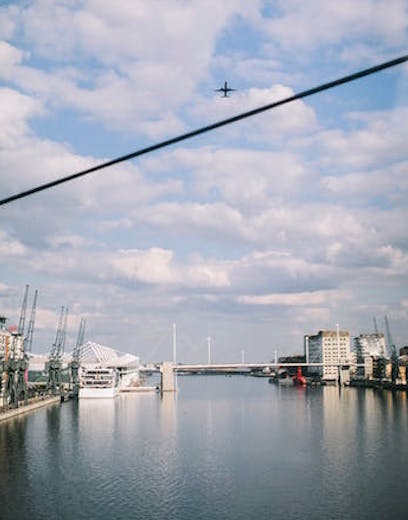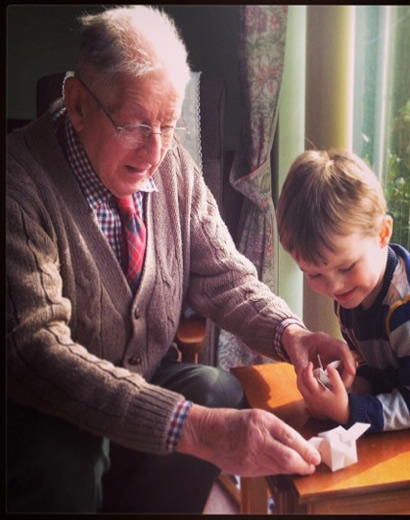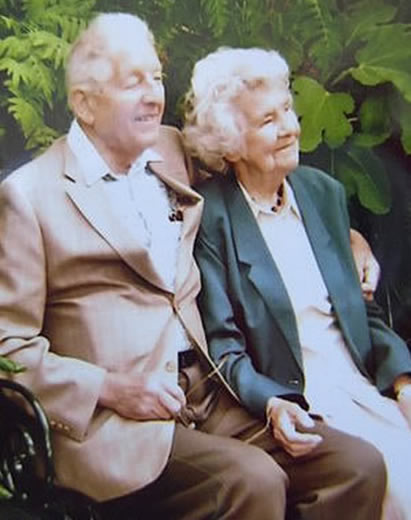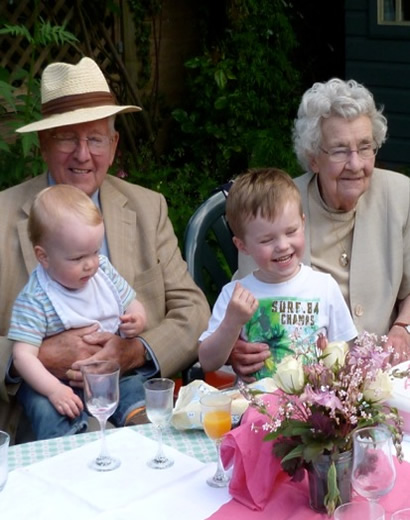The River Thames.
I was born in Southwark, which in medieval times was the first borough, or wark, built outside the City walls across London Bridge on the south side of the river. Londoners years ago always called it THE Borough because of this. I did not live too far from the river but as we moved to Brixton when I was four years old, I do not remember much about it from that period. However as I grew up in Brixton then Holloway, my parents often took me to the City where we had relatives and we often went sight seeing by the river. One old couple we used to visit, named Childs from Mums side of the family , lived at Blackfriars near Ludgate hill, in flats built in Victorian times, called buildings.They were right at the side of the railway that went across Ludgate Bridge and were very dark and gloomy. The passages and stairs were all dark brick or tiles but when you went through the landing door into their flat it was just like walking back into Victorian times. It was full of knicknacks, antimacassars and old pictures, and I particularly remember one of the Great War of a soldier kneeling down by his dying horse and can see it in my mind today. Sadly the whole area was destroyed in the Blitz. But back to the Thames, My memories are all of visits to parts of the river.
The favourite spot to visit was London Bridge, where you could look down at the stretch of water towards Tower Bridge known as The Pool of London, where all the wharfs and wharehouses were in constant use, and both sides of the river were full of ships. Before the coming of container ships which needs deep water berths and special gantries and cranes to unload the containers, ships were much smaller and many could get under Tower Bridge and have no difficuulty in tying up in the Pool.It is a sobering thought that as I used to stand on London Bridge as a boy and looked at the ships they were mainly British built and most flew the Red Ensign. Each wharf had its lines of cranes, each of which ran on railway lines with tall derricks that could reach out across the ships and down into their holds. Turn round time was important then as it is now, so all the cranes seemed to be nodding as they unloaded the ships. Just by the bridge the Billingsgate Fish Market had its own wharf although by then most fish came in by rail and lorry. The Billingsgate porters used to wear white overalls ( anyway they were white originally) and a special flat wooden hat that they balanced fish baskets on in an am,azing way. Another dock was where bananas came in and I remember seeing the great big bunches of bananas swinging in Some of the cargoes were unloaded on to barges, again with the help of the cranes, and then taken up or down the river to particular wharfs or destinations. These barges were quite big and were simply just empty metal shells, and were pulled by tugboats most of which were still steam drivenThames tugboats had to have a funnel that could be pulled down going under bridges especially at high tide when traffic was busiest.Maximum use was made of the tides up or down the river and a single tug could manage several barges usually in pairs. At slack water when the tide was on the turn the men who controlled this traffic, called lightermen, could manouver barges into position using long sweeps or oars, a skill passed down over the generations. The tidal flow is very strong because in modern times the river has been narrowed between embankments on both sides but even in the Middle Ages when London Bridge had many small arches it was always dangerous to shoot under the bridge at full tide.
Perhaps what I most remember are the pleasure paddle steamers from Tower Pier.They had been a favourite of Londoners since they were introduced in early Victorian times One of the early disasters was when in 1878, the Princess Alice paddle steamer, , full of holiday makers, was cut in half just north of Woolwich Pier, by the the collier, the Bywell Castle, with a great loss of 640 lives. One remarkable escape was when a man on the bow of the Pricess Alice, which had boken of and was pushed up by the force of the collision, suddenly found himself level with the colliers deck and jumped on to it before the bow section sank back below the water. It caused quite a stir and one positive result was the start of safety regulations on Thames river craft. One of these was that all the seats on the upper deck were sealed metal boxes with manropes round that floated off if the ship sank and gave survivors something to hang on to.
In my young days the paddle steamers were of the Eagle Line such as the Golden Eagle and Golden Daffodil. You would all board early in the day at Tower Pier and the first excitement was to see Tower Bridge open and we would sail through on our way down river,All the docks were working then and there was lots to see on both sides of the river,The paddle steaners had reciprocating engines that were open below so you could stand and look down into the engine room and see the big piston rods and revolving big ends. This, with all the heat and smell of hot metal and oil, and the sight of viglant engineers going round with their oilcans, gave a great sense of power and there were always lots of men and boys watching. When we got to Southend, Margate or Ramsgate they would tie up at the end of the pier and holiday makers would disembark for the day. On the return home they would straggle back to the pier to be picked up and start the journey home. All the ships had a licence so as they moved back up the river they got merrier and merrier .The last excitement at the end of a summer day was to see Tower Bridge open and to see the setting sun behind the bridge. If the weather had been good it was always a very satisfying day.
The foreshore of the Thames is often exposed at low tide and was always messy and muddy Lots of interesting artifacts can be found if you brave the mud but it was never attractive for kids to play in. At one time loads of sand was dumped on the foreshore by the Tower to give London children a clean beach to play on . It was never a success because the river washed it away and it had to be constantly replaced. When the Battersea Power Station was in full swing special seagoing colliers with low top hamper went up the river at high tide , They were the biggest ships to be seen regularly on the Thames up river and I recall in the war seeing some with a gun mounted and there was one which claimed a U Boat kill.
Pleasure craft used to operate from Westminster Pier, as they still do, and in 1938 our class at school went on a day trip to Westminster by coach and then down the river by boat to Dagenham where we went over the Ford Motor factory in its hay day. The cars were made completely at the factory and it was a special thrill to see them tap the huge blast furnace to cast the engine blocks. Then back up the river past all the docks. Little did I think that in the next two years many would be burnt to the ground.
The Victoria Embankment which was built in the 19th century when the sewers were putin, was always a lovely place to walk along and if we went to London by tram we would sometimes go through thr Kingsway tram tunnel and come out on the Embankment under Waterloo Bridge. I always thought the area had a special charm and it was there by Cleopatras Needle that I chose to propose to Eileen, but by then the War had come and gone and you could see the big chunks of granite chipped out by bomb splinters.When I went to work in Ludgate Circus in Oct 1940 I used to travel by workman ticket which you had to get before 7.30am and as I did not start until pam I had a lot of time to spare . I used get out at Piccadilly, walk down lower Regent St through St James Park and on to Westminster. I would then walk all down the Victoria Embankment to Blackfriars and up to Ludgate Circus.It was the time of the nighjt blitz and each morning I coud see the havoc of the previous night. At one point along this walk you get a lovely picture of St Pauls rising above the City and I will always remember this sight with St Pauls emerging from the smoke and flames of the previous night. When we used to have the Oxford and Cambridge boat race it got a lot more attention than it does today. Everybody used to wear light or dark blue favours to show who they supported and I rember some were little cheap celluloid dolls dressed in light or dark blue. The race started at Putney Bridge not far from where Uncle Alf and Auntie Alice lived and there were crowds of people all along the banks and on the bridges it went under.
Further down the river Southend was always a Londoners favourite spot for holidays . The pier was, and still is, one and a quarter miles long so that large pleasure craft could put passengers ashore. There was a large amusement complex called The Kursaal that had all the modern fairground attractions
Today it has all changed with the docks going down the river and it has all been redeveloped.For me the old magic remains and I will always think of the river as liquid history . .
The favourite spot to visit was London Bridge, where you could look down at the stretch of water towards Tower Bridge known as The Pool of London, where all the wharfs and wharehouses were in constant use, and both sides of the river were full of ships. Before the coming of container ships which needs deep water berths and special gantries and cranes to unload the containers, ships were much smaller and many could get under Tower Bridge and have no difficuulty in tying up in the Pool.It is a sobering thought that as I used to stand on London Bridge as a boy and looked at the ships they were mainly British built and most flew the Red Ensign. Each wharf had its lines of cranes, each of which ran on railway lines with tall derricks that could reach out across the ships and down into their holds. Turn round time was important then as it is now, so all the cranes seemed to be nodding as they unloaded the ships. Just by the bridge the Billingsgate Fish Market had its own wharf although by then most fish came in by rail and lorry. The Billingsgate porters used to wear white overalls ( anyway they were white originally) and a special flat wooden hat that they balanced fish baskets on in an am,azing way. Another dock was where bananas came in and I remember seeing the great big bunches of bananas swinging in Some of the cargoes were unloaded on to barges, again with the help of the cranes, and then taken up or down the river to particular wharfs or destinations. These barges were quite big and were simply just empty metal shells, and were pulled by tugboats most of which were still steam drivenThames tugboats had to have a funnel that could be pulled down going under bridges especially at high tide when traffic was busiest.Maximum use was made of the tides up or down the river and a single tug could manage several barges usually in pairs. At slack water when the tide was on the turn the men who controlled this traffic, called lightermen, could manouver barges into position using long sweeps or oars, a skill passed down over the generations. The tidal flow is very strong because in modern times the river has been narrowed between embankments on both sides but even in the Middle Ages when London Bridge had many small arches it was always dangerous to shoot under the bridge at full tide.
Perhaps what I most remember are the pleasure paddle steamers from Tower Pier.They had been a favourite of Londoners since they were introduced in early Victorian times One of the early disasters was when in 1878, the Princess Alice paddle steamer, , full of holiday makers, was cut in half just north of Woolwich Pier, by the the collier, the Bywell Castle, with a great loss of 640 lives. One remarkable escape was when a man on the bow of the Pricess Alice, which had boken of and was pushed up by the force of the collision, suddenly found himself level with the colliers deck and jumped on to it before the bow section sank back below the water. It caused quite a stir and one positive result was the start of safety regulations on Thames river craft. One of these was that all the seats on the upper deck were sealed metal boxes with manropes round that floated off if the ship sank and gave survivors something to hang on to.
In my young days the paddle steamers were of the Eagle Line such as the Golden Eagle and Golden Daffodil. You would all board early in the day at Tower Pier and the first excitement was to see Tower Bridge open and we would sail through on our way down river,All the docks were working then and there was lots to see on both sides of the river,The paddle steaners had reciprocating engines that were open below so you could stand and look down into the engine room and see the big piston rods and revolving big ends. This, with all the heat and smell of hot metal and oil, and the sight of viglant engineers going round with their oilcans, gave a great sense of power and there were always lots of men and boys watching. When we got to Southend, Margate or Ramsgate they would tie up at the end of the pier and holiday makers would disembark for the day. On the return home they would straggle back to the pier to be picked up and start the journey home. All the ships had a licence so as they moved back up the river they got merrier and merrier .The last excitement at the end of a summer day was to see Tower Bridge open and to see the setting sun behind the bridge. If the weather had been good it was always a very satisfying day.
The foreshore of the Thames is often exposed at low tide and was always messy and muddy Lots of interesting artifacts can be found if you brave the mud but it was never attractive for kids to play in. At one time loads of sand was dumped on the foreshore by the Tower to give London children a clean beach to play on . It was never a success because the river washed it away and it had to be constantly replaced. When the Battersea Power Station was in full swing special seagoing colliers with low top hamper went up the river at high tide , They were the biggest ships to be seen regularly on the Thames up river and I recall in the war seeing some with a gun mounted and there was one which claimed a U Boat kill.
Pleasure craft used to operate from Westminster Pier, as they still do, and in 1938 our class at school went on a day trip to Westminster by coach and then down the river by boat to Dagenham where we went over the Ford Motor factory in its hay day. The cars were made completely at the factory and it was a special thrill to see them tap the huge blast furnace to cast the engine blocks. Then back up the river past all the docks. Little did I think that in the next two years many would be burnt to the ground.
The Victoria Embankment which was built in the 19th century when the sewers were putin, was always a lovely place to walk along and if we went to London by tram we would sometimes go through thr Kingsway tram tunnel and come out on the Embankment under Waterloo Bridge. I always thought the area had a special charm and it was there by Cleopatras Needle that I chose to propose to Eileen, but by then the War had come and gone and you could see the big chunks of granite chipped out by bomb splinters.When I went to work in Ludgate Circus in Oct 1940 I used to travel by workman ticket which you had to get before 7.30am and as I did not start until pam I had a lot of time to spare . I used get out at Piccadilly, walk down lower Regent St through St James Park and on to Westminster. I would then walk all down the Victoria Embankment to Blackfriars and up to Ludgate Circus.It was the time of the nighjt blitz and each morning I coud see the havoc of the previous night. At one point along this walk you get a lovely picture of St Pauls rising above the City and I will always remember this sight with St Pauls emerging from the smoke and flames of the previous night. When we used to have the Oxford and Cambridge boat race it got a lot more attention than it does today. Everybody used to wear light or dark blue favours to show who they supported and I rember some were little cheap celluloid dolls dressed in light or dark blue. The race started at Putney Bridge not far from where Uncle Alf and Auntie Alice lived and there were crowds of people all along the banks and on the bridges it went under.
Further down the river Southend was always a Londoners favourite spot for holidays . The pier was, and still is, one and a quarter miles long so that large pleasure craft could put passengers ashore. There was a large amusement complex called The Kursaal that had all the modern fairground attractions
Today it has all changed with the docks going down the river and it has all been redeveloped.For me the old magic remains and I will always think of the river as liquid history . .






